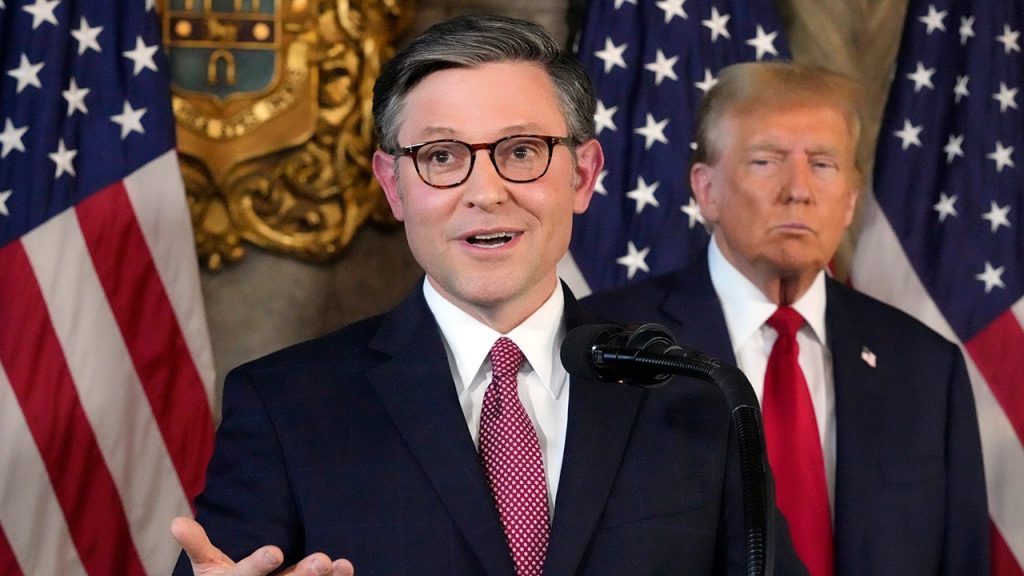The brink of a government shutdown loomed large on Thursday night as a stopgap funding bill, championed by President-elect Trump, failed to garner the necessary support in the House of Representatives. This failure underscores the deep divisions within Congress regarding government spending, exacerbated by the looming Friday deadline. The bill, requiring a two-thirds majority for passage, fell significantly short, failing to achieve even a simple majority. The final tally stood at 174 in favor and 235 against, revealing a fractured Republican party with 38 members defying Trump’s endorsement. Only two Democrats crossed the aisle to support the measure. This dramatic turn of events followed two days of intense political wrangling in Congress, marked by internal disputes over government funding and further complicated by the intervention of Trump and his allies, Elon Musk and Vivek Ramaswamy. Adding to the existing fiscal pressures, the national debt has ballooned to over $36 trillion, accompanied by a national deficit exceeding $1.8 trillion.
The failed legislation was a hastily crafted alternative to an earlier bipartisan agreement that would have extended the government funding deadline to March 14 and included a range of unrelated policy provisions. The initial deal crumbled under pressure from hardline GOP members, influenced by Musk and Ramaswamy, who opposed its expansive scope and perceived lack of fiscal restraint. The revised bill, while retaining the March 14 deadline extension and a suspension of the debt limit, was significantly slimmed down from 1,547 pages to a mere 116 pages. This streamlining aimed to appease fiscal conservatives while still addressing critical funding needs and delaying the politically charged debt ceiling debate until after the 2026 midterm elections, a strategic move favored by Trump.
Despite the revisions, the bill continued to incorporate elements unrelated to essential government operations. These included approximately $110 billion in disaster relief funding for victims of storms Milton and Helene, and an allocation to reconstruct Baltimore’s Francis Scott Key Bridge, damaged earlier in the year by a barge collision. Notably absent from this iteration were provisions for a congressional pay raise, the first since 2009, and funding for the revitalization of Washington, D.C.’s RFK stadium, both included in the original agreement. This strategic removal of potentially controversial elements reflected an attempt to broaden the bill’s appeal and secure its passage.
The swift unraveling of the initial bipartisan agreement and the subsequent struggle to pass the revised bill highlight the growing polarization and intra-party divisions within Congress. Despite Trump’s public endorsement, urging both Republicans and Democrats to support the measure for the good of the country, the bill faced significant opposition even before its text was released. Democrats, angered by what they perceived as a betrayal by House Speaker Kevin McCarthy, who had initially supported the bipartisan agreement, voiced their staunch opposition. Chants of “Hell no” echoed from their closed-door meeting, signaling their near-unanimous rejection of the revised bill.
Adding to the complexity, members of the ultra-conservative House Freedom Caucus also declared their intention to vote against the bill, arguing that it failed to address their concerns about fiscal responsibility. Rep. Chip Roy, a prominent member of the Freedom Caucus, criticized the bill for its inclusion of $110 billion in deficit spending without corresponding cuts or structural reforms. He also took issue with the proposed suspension of the debt ceiling, which he framed as a massive increase in the national credit card without any accompanying efforts to curb spending. This opposition from both sides of the political spectrum ultimately doomed the bill’s chances of passage.
The failed vote leaves the government teetering on the edge of a partial shutdown, with the Friday deadline rapidly approaching. The failure to reach a consensus on even a temporary spending measure reflects the deep ideological divisions within Congress and the difficulty of finding common ground in an increasingly polarized political climate. The involvement of external figures like Musk and Ramaswamy further complicates the situation, adding another layer of influence and pressure on lawmakers already grappling with complex political calculations. The looming shutdown threatens to disrupt essential government services and further erode public trust in the ability of Congress to effectively govern. The immediate future remains uncertain, with the possibility of a shutdown looming large and the need for a resolution becoming increasingly urgent.

